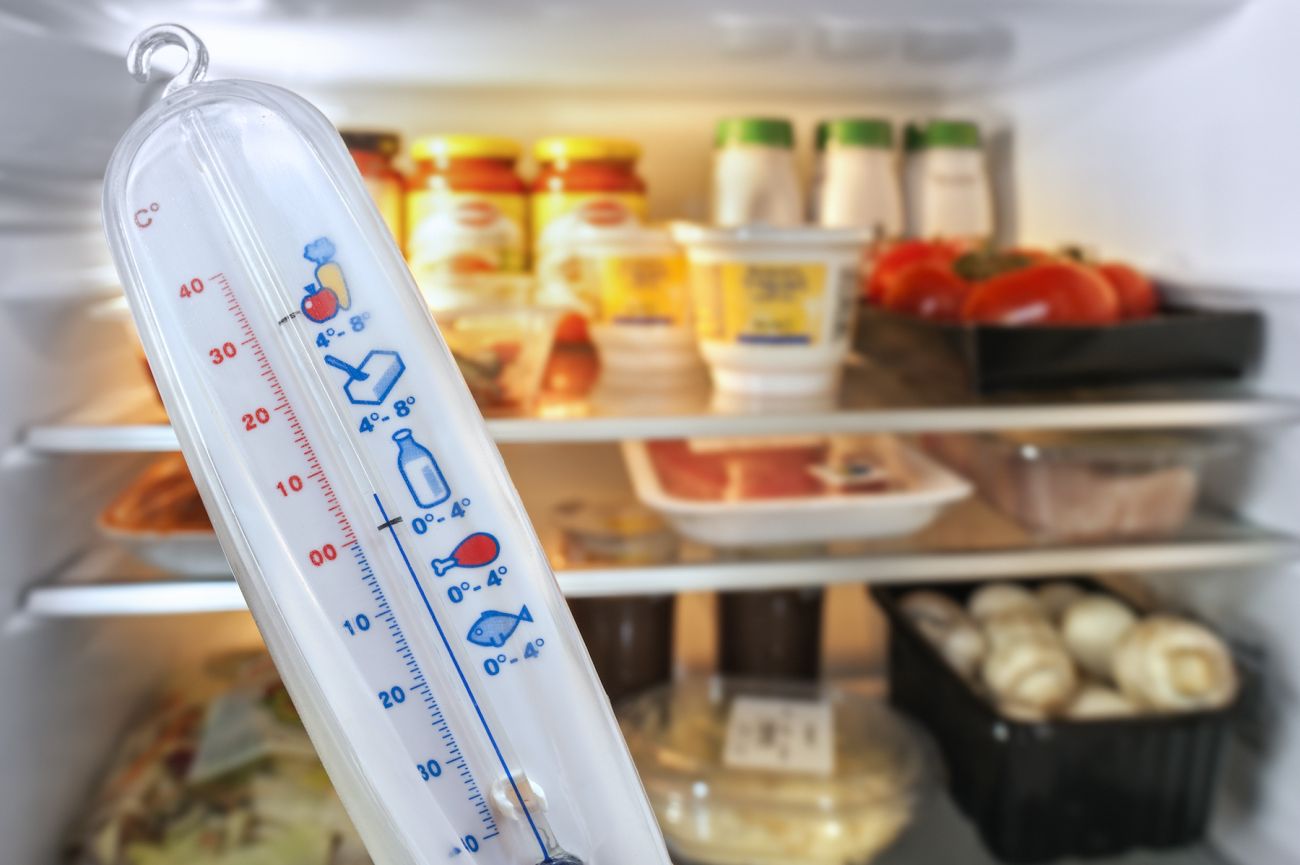Food safety is important for everyone and following guidelines can lower your risk of ingesting pathogens – germs that can make you sick. If your immune system is weakened by cancer or cancer treatments, you may get sick faster or more easily.
Government agencies that protect our food supply include:
- U.S. Department of Agriculture Food Safety and Inspection Service (FSIS) makes sure the commercial supply of meat, poultry and egg products is safe and correctly packaged.
- U.S. Food and Drug Administration (FDA) makes sure all other foods are safe and correctly labeled.
- Centers for Disease Control and Prevention (CDC) investigates foodborne illnesses, collects data and monitors the effectiveness of prevention and control efforts.
Follow the four rules of food safety
Together, the above agencies have identified these four basic rules:
Clean it: Wash hands and surfaces often.
- Hands: Use plain soap and water and scrub the backs of your hands, between your fingers and under your nails for at least 20 seconds, roughly the amount of time it takes to sing “Happy Birthday” twice.
- Surfaces: Wash with hot, soapy water, especially after they’ve held raw meat, poultry, seafood or eggs.
- Cloth (dish towels, aprons, etc.): Machine wash often in hot water with detergent.
- Food: Wash fruits and vegetables under running water.
Separate it: Avoid spreading germs by separating raw meat and poultry from ready-to-eat food.
- Use different plates, utensils and cutting boards for foods you eat fresh and for raw meat, poultry, or seafood you will cook. Replace cutting boards when they are worn.
- Thoroughly wash any item that touches raw meat, poultry, seafood, eggs or flour in hot, soapy water.
- When shopping, put raw meat, poultry and seafood in separate plastic bags. When home, put them in containers or plastic bags and freeze if not using in a few days.
- In the fridge, keep eggs in their original carton and store them in the main compartment — not in the door. In the door, they are exposed to temperatures changes as the door opens and closes, which causes them to rot faster.
Cook it: Bring to the proper temperature to be sure it’s safe.
- Use a digital food thermometer in the thickest part to check that the food has reached the right temperature.
- If not serving right after cooking, keep foods hot (140°F or above).
- If using a microwave, heat food thoroughly, to 165°F or above.
- Follow packaging instructions about letting food stand for a few minutes after cooking.
Chill it: Refrigerate raw meat, poultry and cooked leftovers within two hours.
If the food is exposed to temperatures above 90°F (easy to happen on warmer days), refrigerate it within one hour.
- 40°F and 140°F: The temperature range in which the bacteria that causes food poisoning multiplies the fastest.
- 40°F or lower: Set your refrigerator in this temperature range
- 0°F or below: Set your freezer in this temperature range
- Use a shallow container for leftovers (cools faster in the refrigerator)
- Thaw or marinate meat, poultry and seafood in the refrigerator – not in the sink or on the counter!
- Freezing does not destroy harmful germs, but it can keep food your safe until you can cook it.
- Safe Storage Times chart on foodsafety.gov lets you know when to throw out cold foods.
What if I lose power?
If your power goes out, your refrigerator will keep food safe for up to four hours – if you keep the door closed. After four hours, throw away perishable foods. (See list below). Do not taste food to see if it’s “still good”: When in Doubt, Throw it Out!
What to do with refrigerated items
Throw out after four hours with no power
- Shredded cheeses, low-fat cheeses, soft cheeses (blue, Brie, cottage, cream, ricotta, mozzarella)
- Cheesecake, cream-filled pastries, pies with filling containing eggs or milk
- Cut-up fresh fruits or vegetables; prewashed packaged greens; opened vegetable juice; cooked vegetables, pasta, rice, or potatoes
- Opened sauces/dressings: mayonnaise, tartar sauce, horseradish, spaghetti sauce, fish and oyster sauce. Gravy, stuffing, broth, casseroles, stews, soups, pizza with topping, cooked tofu, jarred garlic in oil
- Doughs (biscuits, rolls, cookie dough), cooked pasta
- Raw or leftover cooked meat, poultry, fish or seafood including deli meat and hot dogs; soy meat substitutes; canned meat or fish that is open or that says “keep refrigerated”
- Milk, cream, yogurt and other dairy products; opened baby formula
- Salads with mayonnaise: tuna, egg, potato, pasta. Fresh and hard-boiled eggs, egg dishes or products
Can keep after four hours with no power
- Hard cheeses (cheddar, Colby, Swiss, Parmesan); processed cheeses (American); grated Parmesan, Romano or combination in a can or jar
- Fruit pies
- Uncut (whole) fresh fruits and vegetables; open fruit juices or canned fruits; dried or candied fresh vegetables, herbs, spices
- Butter; margarine; peanut butter; jelly; relish; olives; mustard; catsup; pickles; Worcestershire, soy, taco barbecue, hoisin sauces; opened vinegar-based dressings
- Bread, rolls, cakes, muffins, quick breads, tortillas, waffles, pancakes, bagels
Freezer food safety
- Food that is properly handled and stored in the freezer at 0°F will remain safe.
- Freezing does not kill most bacteria, but it does stop bacteria from growing.
- The quality of frozen foods will decrease the longer the food is in the freezer. Tenderness, flavor and color can all be affected.
- A full freezer will hold a safe temperature for approximately 48 hours if door stays closed (24 hours if it is only half full).
- Food may be safely refrozen if it still contains ice crystals or is at 40°F or below. Refreezing may also affect taste or consistency.
- If food thaws or stays above 40 degrees for more than two hours, throw it out! A few items may be refrozen after two hours (juice, bread, hard cheese, flour, waffles), but the quality and taste of the food may be different.
Never miss another Cancer Talk blog!
Sign up to receive our monthly Cancer Talk e-newsletter.
Sign up!Resources for more information
- FoodSafety.gov is the gateway to food safety information from government agencies.
- Food & Drug Administration (FDA) Safe Food Handling
- CDC Food Safety
- Ask USDA! U.S. Department of Agriculture. English & Spanish.
Hours: 8 a.m. – 8 p.m. Monday – Friday (Closed on Federal holidays)
Phone: 833-ONE-USDA or 202-720-2791
TTY: 1-800-256-7072.
Online chat: https://ask.usda.gov/s/contactsupport
E-mail: askusda@usda.gov

